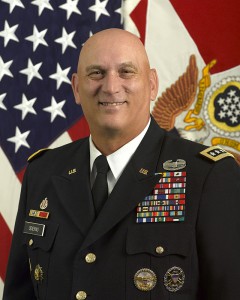Seful Statului Major al US Army a ramas impresionat de evolutia armatei franceze in interventia din Mali de anul trecut: Operatiunea Serval. Mai mult decat atat, generalul american de patru stele a spus ca modul in care francezii au actionat in tara africana ar trebui sa fie un model de urmat de catre toata lumea, inclusiv de militarii americani.
Astfel interventia militara franceza in Mali (cu forte expeditionare) denota anumite capabilitati si atribute pe care generalul american le-ar vrea bine puse la punct si in armata sa.
Si ca sa nu traduc cuvant cu cuvant, va ofer textul in engleza, insa inainte de asta as spune ca opinia americanilor este magulitoare pentru francezi insa nu surprinzatoare, experienta armatei franceze in actiuni expeditionare ca si calitatea trupelor pentru astfel de conflicte fiind semnificativa.
Imbucurator este faptul ca galicii nostri colegi de UE si NATO nu si-au pierdut deloc mana si reprezinta in continuare un etalon in materie de razboi asimetric si pregatirea unitatilor expeditionare. De asemenea un mare plus pentru americani, care nu au nici o jena (ar fi anormal sa aiba) in a recunoste valoarea unei alte filosofii militare si care nu se sfiesc sa invete de la altii.
Imi pastrez de asemenea si parerea conform careia astazi Franta este puterea militara dominanta in UE, atat terestru cat si aerian sau naval, dar mai ales la nivelul tehnologiei militare disponibile cat si al pregatirii militarilor. Probabil ca astazi Frantei i-ar lua tot cam patru saptamani sa ajunga la Berlin, precum Germaniei in “40.
French Army operations in Mali (Operation Serval) in 2013 provide a model for designing and operating an expeditionary force, one that has a number of attributes and competencies that United States Army Chief of Staff General Raymond Odierno has indicated to be requirements for the Army. The model therefore provides a living example that illustrates what meeting those requirements entails, as well as the associated risks. As France’s War in Mali: Lessons for an Expeditionary Army details, the French in Serval demonstrated that they are adept at quickly fielding small yet highly capable forces tailored for specific needs and objectives and reiteratively task organizing as the situation evolves.
They have done so in part by pushing modularity below the battalion level, enabling them to disaggregate and reaggregate elements of their brigades. The French have also invested in technologies and vehicles designed to enhance the capabilities of its units at all echelons. Moreover, the French Army, particularly its expeditionary brigades, is for all intents and purposes a regionally aligned force that has a demonstrated ability to leverage its area-specific expertise to compensate for its small size and to work effectively with and among local populations. The French Army also appears to have an operational culture well suited for expeditionary warfare, particularly in austere environments and with limited resources. The aspects of French Army operations in Mali discussed in this report make the French Army a model for building the kind of expeditionary force envisioned by Odierno, and perhaps one that is also increasingly in line with future United States Army budgets. The French example also highlights compromises that are associated with becoming more expeditionary and the attendant risks.
Operation Serval Provides an Example of How a Technologically Sophisticated Army Organizes and Fields an Expeditionary Force
- The French Army exhibits many of the traits outlined by General Raymond Odierno in his vision of the future force.
- The French Army in Mali operated using small, scalable, and task-organized combined arms forces and built them up or folded them into larger, scalable formations.
French Requirements and Resource Limitations Have Led the Army to Adopt a Force Structure Well Suited for Operations Such as Serval
- The French use relatively lightly armored wheeled vehicles, which have smaller sustainment requirements compared with heavier, tracked vehicles.
- The French prefer mobility over protection, a choice that reflects their cultural and doctrinal emphasis on maneuver.
- The French Army draws on an expeditionary culture, which reportedly makes coping with austerity a point of pride and also reinforces certain approaches toward operating among local populations.
The French Way of War Represented by Serval Might Not Be Optimal for U.S. Commanders, Who Have Greater Resources at Their Disposal
- Those resources enable Americans to minimize risk in a manner that the French cannot.
- Serval does not shed light on France’s capacity to handle more-intense conventional conflicts or provide conventional deterrent power.
- The French are confident that their success on the battlefield and low casualty rate demonstrate the proficiency of their military, but they took large risks.
The Army should examine the French experience for additional insights, including in the following areas:
- the advisability of reducing protection and fielding lighter vehicles to enhance mobility and reduce sustainment requirements, and in particular the introduction of a vehicle with the weight, protection level, and firepower of the VBCI
- the potential advantages and costs of pushing modularity below the brigade level to facilitate battalion and company-sized combined arms deployments
- the impact of digitization on small-unit operations
- the integration of intelligence into lower-echelon operations
- training to enable company commanders to conduct decentralized, combined arms operations and practice mission command
- French insights into training and interoperating with West African and Sahelian security forces
- the costs of France’s rotational equipping strategy (PEGP) and its effect on readiness.
Sursa: Rand.org
GeorgeGMT
